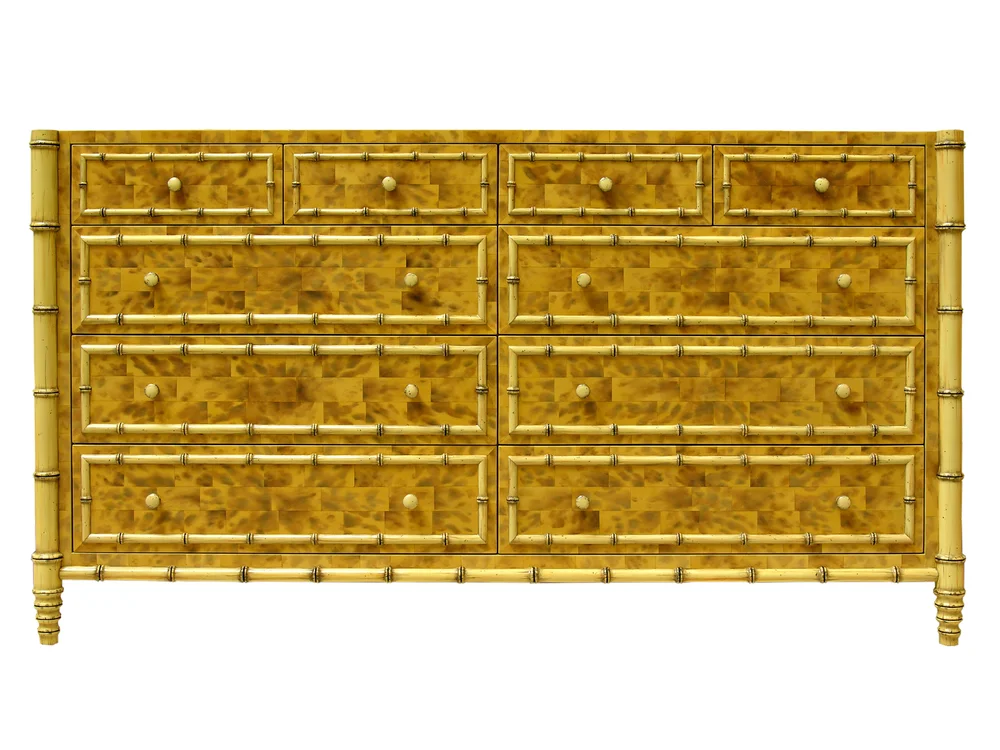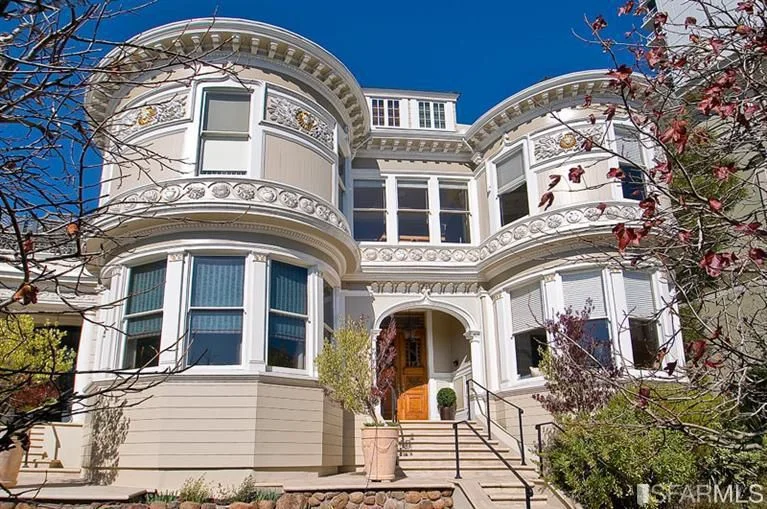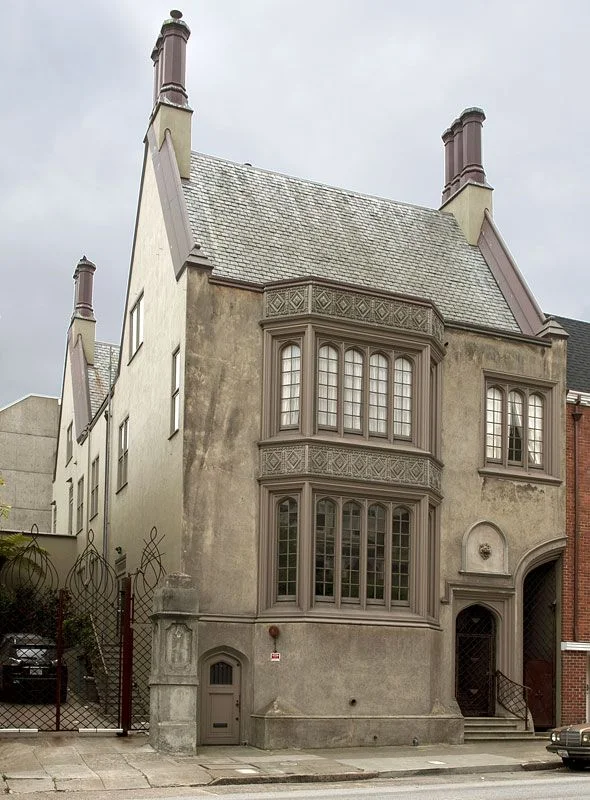Willem Racke - Willem Racke Studio
/Walls of Art
Dating back from the Caves of Lascaux and the fresco adorned ancient city of Pompeii to the more refined skills that ancient artisans employed using lacquer finishing and verre églomisé, decorative painting and finishing reflects the history that cultures had for story telling and beauty. Willem Racke of Willem Racke Studios offers clients an opportunity to enter his world of time honored artistry to grace their homes with his fresh vision on traditional techniques. Sitting down recently with Racke at his production studio in the Inner Mission shed light on the creative talents of this master craftsman.
Willem Racke
CaenLucier: How did you come to the profession of decorative painting?
Willem Racke: I fell into decorative painting. I decided to take a break from college in New Zealand to travel to the US and Europe for a 1 to 2 year trip. I lived in San Francisco for six months then went to New York with the idea of living there for a while, then moving on to Europe. I had a friend in San Francisco and she put me in contact with a friend of hers who lives in New York that happened to be a decorative painter who needed an assistant. I loved the work and was crazy about the art scene in NYC. That six months lasted over 3 years. I returned to San Francisco, started my studio and haven’t looked back.
CL: If you could indulge yourself at home with your craft, which room and what type of treatment would draw your creative talents?
WR: I have bought, renovated and lived in several homes over the last few years, integrating decorative finishing into every one of them. The building where I live now is an industrial building in South of Market, which I renovated into a sophisticated urban loft. The style is very contemporary and I've used decorative finishes throughout, subtle Venetian plasters, custom finished wood paneling, industrial metal finishes. I’m currently working on a mural for my powder room; it’s going to be silhouettes of trees in black-and-white. In my next house I would love to have a paneled library finished in eggplant color lacquer.
CL: Looking back in history what examples of different cultures informing each other have been brought to your modern day craft?
WR: I think people need to be reminded that decorative painting is the first form of art, man painted the walls of caves long before any of the fine arts as we define them existed. Decorative plaster, frescos and painting techniques all date back to Roman times and probably were established well before that. Many historic cultures were reflected in how they painted and finished their residences and temples, Venetian plaster is written about in Vitruvius's De Architectura, a 1st Century B.C. history of Rome. So nothing is really new, it’s all about a fresh vision for traditional techniques that suits the aesthetics of today.
Lacquer finishing, as another example, is enjoying a revival today. The techniques for creating great lacquer are the same as the ones used in ancient China, we have modern tools and equipment to apply the materials but the hand sanding and buffing are all essential to a true lacquer finish.
"I think people need to be reminded that decorative painting is the first form of art, man painted the walls of caves long before any of the fine arts as we define them existed. Decorative plaster, frescos and painting techniques all date back to Roman times and probably were established well before that."
TORTOISE SHELL POWDER ROOM
CL: What are a couple of centuries old techniques that you enjoy employing in today’s interiors?
WR: I like subtle, tonal Venetian Plaster, it really elevates a neutral palette, we do a special Strata finish that goes from dark to light in a way that complements the interior furnishings. I really like Verre églomisé, a reverse glass painting technique that gives an effect that you can’t duplicate in any other way, it plays with the light in a room.
CL: What would the powder room of your dreams look like?
WR: I have always contended that if you are going to go wild, do it in the powder room. I have done many extravagant powder rooms. We did an all tortoise shell powder room in a Nob Hill a pied a terre, walls and ceiling and cabinetry that is just over the top. Recently, I completed a verre églomise powder room inspired by the post impressionist jungle paintings of Henri Rousseau, it was quite a feat of art and engineering to create and install but it’s spectacular. Another over the top powder room was for a young, hip couple. We did the floors walls and ceiling in op art themed polka dots that oscillate for a bit of a mind-bending experience. If you aren’t a bit stoned when you walk in you certainly will be when you walk out.
CL: Have you seen any decorative finish in your international travels that you have developed to make your own?
WR: The Tsarskoye Selo museum in the Catherine palace in Saint Petersburg is one of the highest examples of decorative finishing in the world. Every surface is decoratively painted or gilded or treated in some way. I was really impressed by the elaborate inlaid wood floors and I developed techniques to translate that look into stenciled and stained designs for wood floors.
CL: Have you seen over the years your part of interior design work go through particular fads? If so what?
WR: When I first started finishing in the 80’s the look was Memphis, lots of pastel blues, purples and greens. There was a lot of sea sponging wall finishes and faux marble was usually over the top. Now finishes are more refined and subtle, I mean we still do faux marble, we participated in the restoration of the Salon Doré at the Legion of Honor where we faux marbled the trim to match the real stone.
Detail of Restored Park Lane Beamed Ceiling - Nob Hill
CL: Do you have a particular finish application that is near and dear to your heart?
WR: I am really liking verre églomisé these days, it’s a vintage French technique of reverse painting on glass that has a lot of visual impact when it’s done well. The jungle inspired verre églomisé powder room is a memorable room. I also love tortoise shell finishes, they can be so dramatic in the right setting.
CL: Looking back on your career, what was one of the most challenging projects you were commissioned?
WR: We did a Venetian plaster mural for Cushman Wakefield’s downtown headquarters that were designed by Gensler. The mural is a “snails eye” view of an office tower done in monochromatic tones of plaster and then incised to create a bas-relief. The geometry of the extreme perspective in different tones combined with the thousands of facets were a real challenge to execute but the final result was worth the effort.
CL: How do you find yourself most often brought into a interior design project?
WR: My projects are commissioned mostly through designers, architects and contractors, I also work directly with clients. I have worked to develop ongoing long term relationships with all my clients who rely on me for my knowledge, experience and sense of aesthetics.
TORTOISE SHELL CHEST OF DRAWERS
Stenciled Flooring
CL: Any particular designers that you enjoy working with/understand how best to implement your skills into a project?
WR: I have had the opportunity to work with many of the best designers on incredible projects. I have worked with Jay Jeffers on many of his projects, his work is elegant and beautiful. I enjoy working with Kelly Hohla, she is a rising creative talent with a unique point of view. I love working with Darin Geise of Coup D’etat, he is a unique force in the world of bay area design, we have done wall finishes for the showroom as well as window displays. I have done projects with Peter Marino, an amazing architect and designer.
CL: What is your idea of a perfect client?
WR: The perfect client is someone who I resonate with on an aesthetic level. I like working with designers and clients who understand and respect the art and craft that goes into finishing. I have a lot of experience and expertise in the field and it’s always great to be able to work with clients and designers who know, for example, that I have an extensive reference library for research that centers on decorative arts, both historical and modern to resource from. I can do my best work when the designer or client gives me some free rein and likes to collaborate.
CL: What is your favorite project that you are working on currently?
WR: We are working on a project in Hillsborough with Kelly Hohla, interior designer and Richard Beard, architect. It’s a big project with great design and finishes; we have been working for six months producing samples and concepts. In one of the rooms, we are doing lacquer finish inspired by the 2015 San Francisco Decorator Showcase room I designed that has a muted, polychromatic palette and high gloss finish. We’re also doing a dark turquoise lacquer pantry. Subtle Venetian plaster finishes and custom wood graining and finishing are part of the plans.
CL: What are you reading at the moment?
WR: I’m reading The White Road: Journey into an Obsession by Edmund de Waal. The author is a ceramicist who specializes in porcelain. The story is about his travels to the “white Hills” of the world and tracing the roots of porcelain and how it became the refined art and collected thing it is today. The book was given to me by Ron Schwartz, my first client and now friend, who is a collector of fine porcelains. It’s really given me a respect for the art and it’s significance in history.
CL: If you could choose another career what would it be?
WR: I would be an architect. That was my original plan. I wanted to travel for a year or two then return to New Zealand to study architecture. Obviously, my life went in another direction. I am really happy though that my chosen career enables me to be a part of the world great architecture and design.
Op-Art Powder Room
CaenLucier would like to thank Willem Racke for all his time and amazing energy!





























